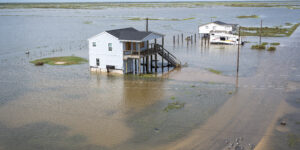A new study by Florida State University researchers examined demographics, infrastructure and more than seven decades of weather data to determine which places in Kentucky are most vulnerable to tornadoes.
The results of the research, led by Eren Ozguven, director of the Resilient Infrastructure and Disaster Response Center (RIDER) and a professor at the FAMU-FSU College of Engineering, was published by Sustainability.
“Tornadoes hit quickly, so preparing for them is key,” Ozguven, said. “You need to have plans ready, on an individual and government level. Our research shows where these storms are likely to have the greatest impact on people.”
Ozguven’s team used geographic information systems software to combine variables such as frequency of tornadoes, transportation infrastructure, household income and other factors to determine where populations are likely to have the resources to be more resilient and where these storms will be more disruptive.
The results could help local and state governments identify regions with vulnerable communities and fragile transportation networks, helping pinpoint where finite resources can be used most effectively for handling debris, community preparedness and other recovery and preparation endeavors, researchers said.
The team analyzed data from Kentucky because of the state’s history with tornadoes, including a 2021 outbreak in western Kentucky that killed more than 50 people.
The methodology could be expanded to other places, including Florida, Ozguven said.
The places affected by tornadoes are changing as climate change alters the frequency, intensity and location of the storms.
Up-to-date location-specific information is vital for planning and mitigation purposes.
The Florida Panhandle sustained multiple tornadoes in January 2024 that destroyed homes, toppled trees and injured several people.
The project was funded by the Natural Hazards Center, a National Science Foundation information clearinghouse for the societal dimensions of hazards and disasters.
Co-authors were Mehmet Burak Kaya, a graduate research assistant at RIDER, Onur Alisan, a postdoctoral researcher at RIDER, and Alican Karaer, a former doctoral student at RIDER who is now a researcher at Iteris.
Originally written by Bill Wellock for Florida State University. (2024, March 13). Ready for the storm: Researchers analyze infrastructure, demographics to see where tornadoes are most disruptive. ScienceDaily. Retrieved April 15, 2024 from www.sciencedaily.com





















 AI in Property/Casualty Insurance: Why Trusted Data Is the Missing Link
AI in Property/Casualty Insurance: Why Trusted Data Is the Missing Link  Berkshire Hathaway Announces Leadership Appointments: New CEO at GEICO
Berkshire Hathaway Announces Leadership Appointments: New CEO at GEICO  Legal Finance and Insurance: From Confusion to Collaboration
Legal Finance and Insurance: From Confusion to Collaboration  Chubb, The Hartford, Liberty and Travelers Team Up on Surety Tech Co. Launch
Chubb, The Hartford, Liberty and Travelers Team Up on Surety Tech Co. Launch 




